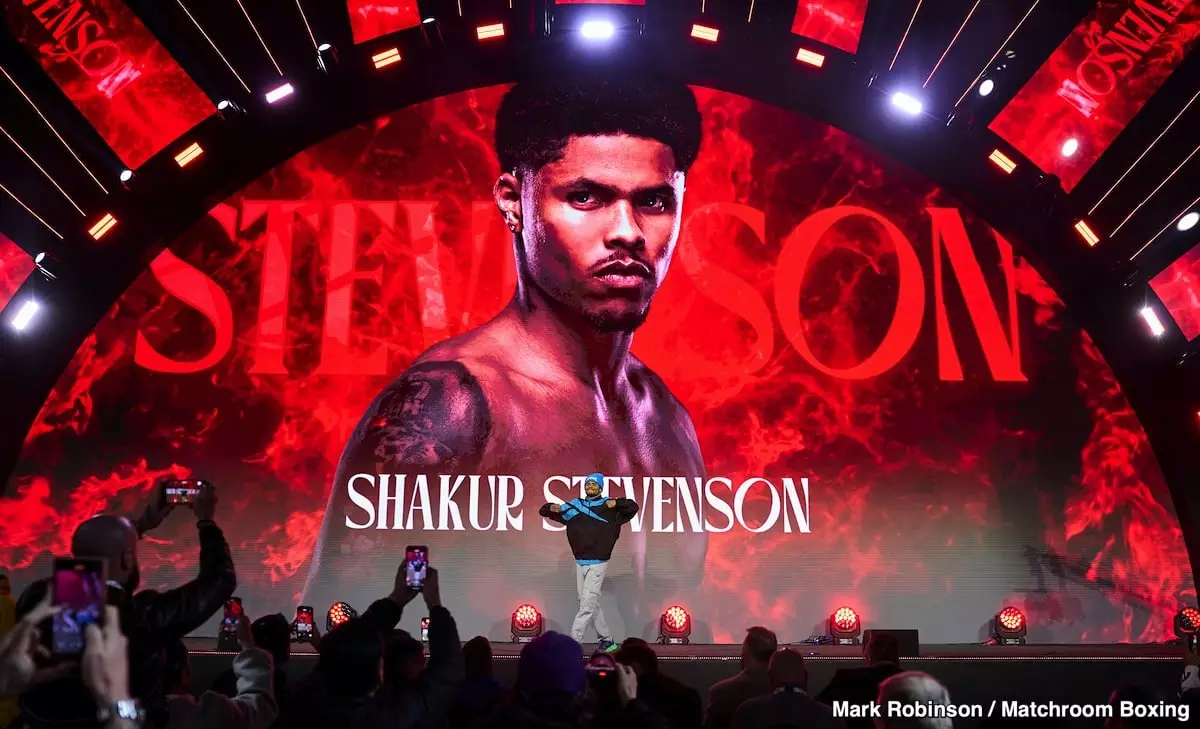In the rapidly evolving landscape of professional boxing, a significant schism exists between traditional fighting styles and the cravings of contemporary audiences. Tim Bradley, a former world champion and current boxing analyst, has weighed in on this phenomenon, highlighting an unsettling trend among younger fans who view the highly skilled Shakur Stevenson as stale and monotonous. This perspective reflects not just a view on Stevenson, but an overarching shift in what resonates with viewers today—characterized by a desire for explosive finishes and relentless action rather than the nuanced strategies of the ‘sweet science.’
The digital age has transformed how fans consume sports, aligning their expectations more with mixed martial arts (MMA) and the relentless chaos often found in that arena. It’s an era where the immediacy of social media ensures that highlights and knockouts dominate the conversation, overshadowing the complex structural fabric of boxing. Fans now often arrive at matches with presets set to high-octane entertainment, leading to a mismatch in appreciation for a fighter’s technical prowess, such as Stevenson’s deft ability to evade punches and score points through skillful tactics.
The Short Attention Span Dilemma
Bradley’s assertion that today’s younger generations possess shorter attention spans is more than a simple critique; it captures a pivotal change in how sports are engaged with. The notion that fight fans desire constant action is underpinned by numerous studies showcasing how tech-driven lifestyles can diminish patience. With countless options available at their fingertips, viewers may lose interest quickly if a fight doesn’t meet their inflated expectations for thrills and suspense.
Moreover, the boxing world has also adapted to these expectations, often at the expense of fighters like Stevenson. The entertainment value has seemingly taken precedence over the skill level, leading to decisions that prioritize fighter profiles over genuine competition. This shift creates a problematic incentive for promoters, who prioritize matchups that promise to keep fans engaged, often resulting in pairing fighters strategically to generate excitement or prevent disapproval and booing from the crowd.
Shakur Stevenson: A Case Study in Modern Criticism
Stevenson’s recent bouts have come under scrutiny, particularly due to his perceived reluctance to engage in toe-to-toe firefights—a characteristic that many boxing purists would argue underscores the essence of the sport. While his record showcases an impressive blend of skill and defensive acumen (23 wins, 11 KOs), the general perception among fans seems to be that his avoidance of powerful hitters dilutes the excitement. A lack of knockout power within his recent matchups has seemingly relegated Stevenson to an unexciting label, despite his capabilities being highly technical and effective against less capable opponents.
Bradley highlights a critical point—promoters have become increasingly circumspect in matching Stevenson with punchers, likely to avoid a scenario where Stevenson, who excels in tactical approaches, might be met with hostility from the crowd. The recent choice to pit him against lesser opponents reinforces this strategy, which the boxing community has begun questioning—is this path limiting the sport’s potential for showcasing genuine talent?
Understanding the Sweet Science vs. Seeking Entertainment
Boxing purists have often argued that the sport is multifaceted, rooted deeply in strategy rather than mere violence. Understanding the intricacies of a fighter’s style and the context of their decisions requires investment—something that the instant-gratification culture may not endorse. As a commentator, Bradley expresses concern over the potential for sleep-inducing performances when calling Stevenson’s fights, reflecting not only the fighters’ responsibility but also the broader expectations of the viewing public.
This rift exposes a fundamental truth—boxing faces an identity crisis, grappling with how to deliver entertainment while honoring its storied traditions. While contemporary audiences have an insatiable appetite for fireworks in every match, there’s an equally critical need for appreciation of the artistry at play. Striking a balance is paramount; however, making room for both cerebral bouts and thrilling clashes may become increasingly challenging as boxing continues to adapt to the changing tides of fandom in a digital world. The question remains: can boxing evolve without sacrificing its rich identity, or will the pressures of modernity inevitably redefine it into something altogether different?


Leave a Reply